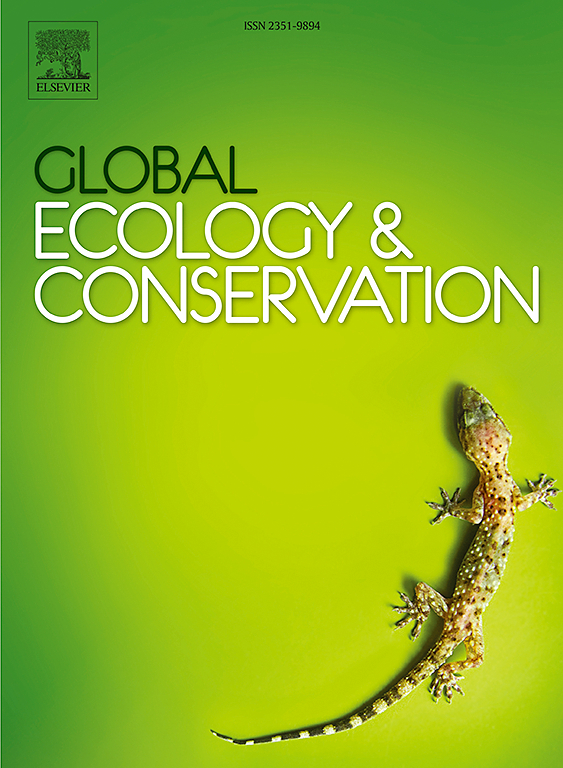A population structure and flowering traits in endangered Sonneratia mangroves: Conservation implications on Hainan Island, China
IF 3.5
2区 环境科学与生态学
Q1 BIODIVERSITY CONSERVATION
引用次数: 0
Abstract
Sonneratia, a critical genus within tropical and subtropical coastal mangrove forests in the Indo-West Pacific biogeographic region, includes Sonneratia × hainanensis, Sonneratia × gulngai, and Sonneratia ovata, which are rare and endangered mangrove plants on Hainan Island, China. Despite its conservation significance, there has been a lack of comprehensive scientific study on the population status and endangerment mechanisms of this genus. In this study, using the multiple methods like diameter at the breast height (DBH, acquiring from the field) instead of age classes, calculation in the quantity between each pair of adjacent DBH classes (laboratory analysis, the same below), static life table compilation, population prediction, and artificial pollination, we investigated the population structures, dynamics, and flowering traits of these above-mentioned three endangered Sonneratia plants. Our findings revealed that S. × hainanensis and S. × gulngai populations had a critical deficiency in young individuals, indicating poor self-renewal capacity and a likely population decline in the future. In contrast, S. ovata showed a high proportion of young individuals, suggesting a potential for population increase. This divergence in population dynamics correlates with differences in flowering traits among the mangroves. S. ovata exhibited the highest pollen viability, fruit set rate, and average seed count per fruit. Consequently, our study suggests that the flowering traits of these Sonneratia plants are pivotal to their conservation status. To address the current population challenges, we recommend the promotion of artificial pollination, the preservation of ex situ germplasm resources, and the enhancement of in situ conservation efforts. Additionally, strict measures should be implemented to prevent anthropogenic deforestation and habitat destruction and long-term conservation education. These strategies are essential for the sustainable conservation and management of endangered Sonneratia plants.
求助全文
约1分钟内获得全文
求助全文
来源期刊

Global Ecology and Conservation
Agricultural and Biological Sciences-Ecology, Evolution, Behavior and Systematics
CiteScore
8.10
自引率
5.00%
发文量
346
审稿时长
83 days
期刊介绍:
Global Ecology and Conservation is a peer-reviewed, open-access journal covering all sub-disciplines of ecological and conservation science: from theory to practice, from molecules to ecosystems, from regional to global. The fields covered include: organismal, population, community, and ecosystem ecology; physiological, evolutionary, and behavioral ecology; and conservation science.
 求助内容:
求助内容: 应助结果提醒方式:
应助结果提醒方式:


